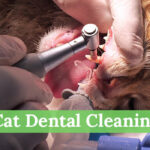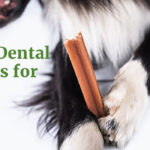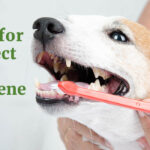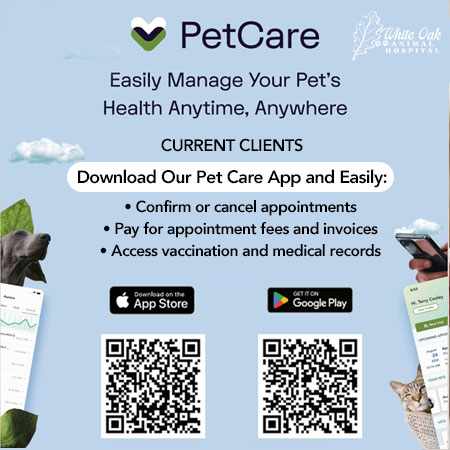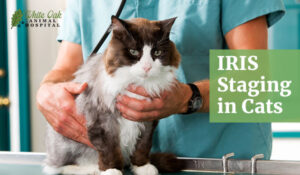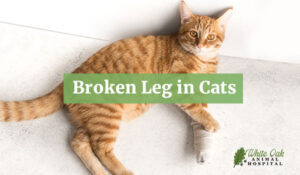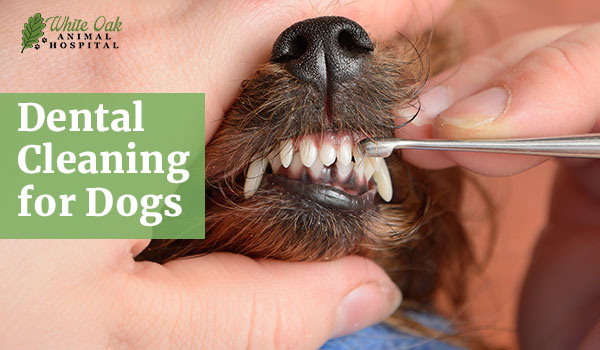
Dental cleaning for dogs is often seen as an essential health task, but it directly affects long-term wellness. Most dental issues start small—plaque buildup, mild gum irritation—but quickly escalate. Bacteria can work their way below the gums and travel through the bloodstream. That sets the stage for heart, kidney, and liver problems.
Pain from oral disease is common. Still, many dogs show no outward signs until the situation is advanced. They keep eating, playing, and acting normally. That’s why dental problems often go unnoticed for too long. The delay can lead to later bone loss, infection, and costly procedures.
These problems are avoidable. Simple habits, early exams, and better follow-through can prevent most of them. Regarding dental cleaning for dogs, the proper steps today can save your pet pain and stress later.
At White Oak Animal Hospital, we do things differently. We pair Western diagnostics with food therapy, acupuncture, and herbal care. Our team builds personalized treatment plans focusing on the whole picture—not just the teeth.
Skipping Dental Cleaning for Dogs Leads to Silent Damage
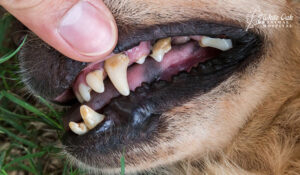 It only takes a few days for plaque to harden into tartar. Once that happens, bacteria build up below the gumline. This causes swelling, bleeding, and eventually tooth loss. The real issue isn’t the tartar—it’s the inflammation. That inflammation travels. Over time, it affects other organs and contributes to long-term disease.
It only takes a few days for plaque to harden into tartar. Once that happens, bacteria build up below the gumline. This causes swelling, bleeding, and eventually tooth loss. The real issue isn’t the tartar—it’s the inflammation. That inflammation travels. Over time, it affects other organs and contributes to long-term disease.
This is why skipping dental cleaning for dogs can quietly create significant health problems. Dogs rarely show oral pain, even when several teeth are infected. Owners often assume everything is fine. Meanwhile, bacteria continue to spread.
A complete dental exam with anesthesia allows us to assess the gums, take dental X-rays, and treat problems early. Non-anesthetic cleanings may remove visible tartar, but they miss deeper disease. They can also cause stress if the dog isn’t entirely comfortable being handled.
In Chinese medicine, the mouth reflects the health of the stomach and digestive system. A dog with gum heat or dampness may also have underlying digestive issues. If we ignore the mouth, we may also miss signals about the rest of the body.
At White Oak Animal Hospital, we don’t just clean the teeth. We evaluate the whole system because dental cleaning for dogs is never just about the mouth.
Why Visual Checks Fail During Dental Cleaning for Dogs
During dental cleaning for dogs, one of the biggest mistakes is relying only on what you can see. More than half of dental disease happens below the gumline. That includes abscesses, root exposure, and deep bone loss. These issues won’t show up in a quick check or surface cleaning.
Without full-mouth X-rays, serious problems go untreated. This leads to unnecessary pain, lost teeth, and infections that spread beyond the mouth. Some owners don’t realize this until their dog refuses food or starts drooling from pain.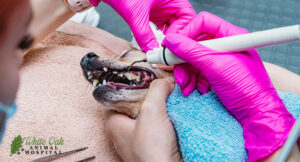
Basic cleanings that skip X-rays are often promoted as faster or more affordable. The reality is they miss key steps. It’s not a complete treatment. In many cases, the dog leaves with clean-looking teeth and active infections still in place.
X-rays help us see what’s going on. They show us the roots, the jawbone, and hidden areas that need care. This is a core part of safe and effective dental cleaning for dogs.
From a TCVM point of view, hidden inflammation in the mouth may reflect deeper heat patterns. These patterns can affect digestion, behavior, energy, and sleep. Treating visible plaque while ignoring the rest of the pattern is like treating a symptom but not the cause.
We believe the future may include image-based dental scans that use AI to catch patterns early. This would improve diagnosis and may shorten procedures. It’s not here yet, but it’s coming. For now, we rely on thorough exams, experienced hands, and a complete approach.
Dental Cleaning Without Integrative Support Is Short-Sighted
Dental cleaning for dogs works best when it’s paired with full-body support. Many dogs go through a cleaning, recover quickly, and seem fine. But others show signs of ongoing inflammation. Their gums stay red, their breath worsens, or infections return. That’s often a sign that something deeper needs attention.
The mouth doesn’t exist in isolation. Oral bacteria can affect the gut, stress the immune system, and strain the kidneys or liver. This is where integrative care helps. It allows us to support healing, strengthen the immune response, and keep the body balanced.
 We offer a full range of Western treatments at White Oak Animal Hospital. That includes diagnostics, extractions, antibiotics, and imaging. But we also go further. After dental cleaning for dogs, we may recommend acupuncture to reduce swelling and help with pain. This can lower the need for medications and support faster healing.
We offer a full range of Western treatments at White Oak Animal Hospital. That includes diagnostics, extractions, antibiotics, and imaging. But we also go further. After dental cleaning for dogs, we may recommend acupuncture to reduce swelling and help with pain. This can lower the need for medications and support faster healing.
We also use herbal medicine to clear gum heat, reduce dampness, or support spleen qi. Each formula is selected based on the dog’s symptoms, constitution, tongue, and pulse findings.
Food therapy is another part of care. During recovery, we may adjust a dog’s diet to include cooling ingredients, easy-to-digest proteins, or soft foods. These shifts help the body focus on healing.
We sometimes use oral probiotics to restore a healthy mouth environment. We may recommend raw meaty bones for the right dogs, though we always assess chewing habits and dental structure first.
We also offer telemedicine consultations for TCVM. These virtual visits are helpful for herb refills, diet planning, or post-op care when a trip to the clinic isn’t practical.
Dental cleaning for dogs should never be limited to removing surface tartar. Most of the risk comes from what’s under the gumline and how the rest of the body responds.
 White Oak Animal Hospital treats dental care as part of full-body wellness. That includes diagnostics, cleaning, and treatment—but also acupuncture, herbal care, and personalized food therapy. Our experience with both Western and Chinese medicine gives us more tools to help your pet stay healthy longer.
White Oak Animal Hospital treats dental care as part of full-body wellness. That includes diagnostics, cleaning, and treatment—but also acupuncture, herbal care, and personalized food therapy. Our experience with both Western and Chinese medicine gives us more tools to help your pet stay healthy longer.
Many dogs live with untreated dental pain. Others go through basic cleanings that leave infections in place. Over time, that leads to more significant problems. Heart strain. Kidney load. Immune burnout. These risks are real—and they’re often preventable.
Our integrative care approach focuses on balance. We look at your dog’s whole system. We ask what else might be contributing. And we build a care plan that fits your pet, not just the problem.
We’ve been doing this for over 28 years. We’ve seen what happens when problems are ignored and how well pets do when treatment matches their needs.
If your dog is due for a dental exam or you’re unsure what’s happening under the surface, reach out. Our team is here to help. We also offer telemedicine consults for follow-up, herbal care, or ongoing wellness support.
The goal is simple. Less pain. Fewer problems. Better health.
Frequently Asked Questions
How often should dogs get professional dental cleaning?
Dental cleaning for dogs is usually recommended once every 6 to 12 months. Some dogs—significantly smaller breeds—may need cleanings more often. Factors like diet, age, and genetics play a role. We base recommendations on each pet’s condition and lifestyle.
Is anesthesia-free dental cleaning safe?
Anesthesia-free cleanings may seem safer, but they don’t address disease under the gums. These cleanings only remove surface tartar. Infections, bone loss, and abscesses can still be present. Most of the fundamental issues are missed without anesthesia and imaging.
Can acupuncture or herbs replace dental cleaning?
No. Dental cleaning for dogs requires the physical removal of plaque and tartar. Acupuncture and herbs are helpful after treatment. They help manage pain, reduce inflammation, and support healing. But they don’t replace mechanical cleaning or surgery when needed.
Are there integrative options for dogs with dental anxiety?
Yes. We use calming herbs, pre-visit acupuncture, and low-stress techniques during check-ins. Some pets still need sedation, but we try to minimize it and make the process as comfortable as possible. This helps reduce fear and makes future visits easier.
What’s different about White Oak’s dental care?
We take a full-body approach. Our dental cleaning for dogs includes imaging, thorough treatment, and follow-up care. But we also support recovery with acupuncture, herbal medicine, and nutrition. That means fewer complications and stronger long-term health.
Related Posts
-
Cat Dental Cleaning: Avoid These 7 Common Mistakes
Cat dental cleaning is an essential part of maintaining your pet’s overall health. Just like…
-
The Best Dental Treats for Dogs: The #1 Approach to Go Beyond Brushing
Maintaining proper dental health in dogs is essential for their overall well-being. Without regular care,…
-
Dog Dental Cleaning: 5 Expert Tips to Achieve the Best Pet's Oral Hygiene
Dog dental cleaning is critical to maintaining your pet's overall health and well-being. Regular…
-
What Are The Health Benefits of Milk Thistle for Cats and Dogs?
Milk thistle is a plant used for centuries to treat liver ailments in humans. Although…

